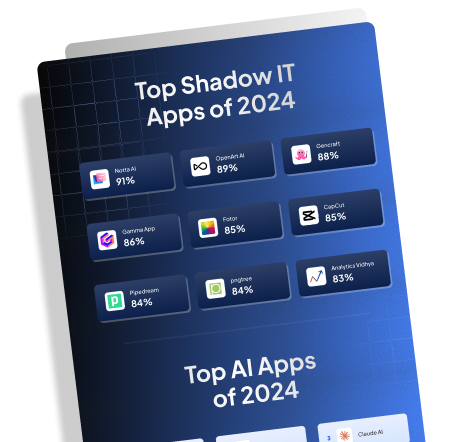A purchase order (PO) is an official document issued by a buyer to a seller, indicating types, quantities, and agreed prices for products or services. It’s a key element in the procurement process, providing a structured method to manage purchasing. Understanding the types of purchase orders is crucial for IT managers in high-tech companies, as it can optimize procurement strategies and manage company resources efficiently.
Examples of Purchase Order Types
Standard Purchase Orders
The most common type of PO, a Standard Purchase Order, is used for one-time purchases. It specifies the exact quantity and price for each item. These are straightforward and are used for straightforward, one-off purchases without any special conditions.
Planned Purchase Orders
Planned Purchase Orders (PPO) are used for recurring orders. They specify the types and quantities of items but not the delivery dates. These orders are ideal for items that are regularly needed but with varying delivery schedules.
Blanket Purchase Orders
Blanket Purchase Orders (BPO), or Standing Orders, are used for ongoing orders over a set period. They don’t specify the quantity of each order, providing flexibility for frequent purchases. They’re effective for supplies that are regularly needed but in varying quantities.
Contract Purchase Orders
Contract Purchase Orders (CPO) are linked to a specific contract with the vendor. They are used when the agreement involves multiple deliveries over time, often at predetermined prices. They’re common in agreements where the specifics are known in advance, such as maintenance services or regular supply deliveries.
Best Practices for Managing Purchase Orders
Managing purchase orders effectively is crucial for IT managers, especially in high-tech companies, to ensure efficient procurement and budget management. Here’s a step-by-step guide on best practices:
Clear Requirement Specification: Define your needs clearly. For IT purchases, specify technical specifications, quantities, and performance criteria.
Vendor Selection and Evaluation: Choose vendors based on reliability, cost, quality, and service. Regularly evaluate vendor performance for long-term relationships.
Purchase Order Automation: Implement a purchase order system to automate the process. This reduces errors, saves time, and keeps records organized.
Regular Review and Update: Regularly review purchase orders for any changes in requirements, prices, or vendor performance.
Effective Communication with Vendors: Maintain open communication with vendors for any changes, delays, or issues in the procurement process.
Budget Tracking and Compliance: Monitor spending against the budget and ensure compliance with company policies and procedures.
Documentation and Record Keeping: Keep detailed records of all purchase orders and related documents for future reference and audit purposes.
Training and Support for Staff: Train staff on the procurement process, the use of the purchase order system, and best practices.
Continuous Improvement: Regularly assess the purchase order process for any potential improvements or optimizations.
Leveraging Technology: Use technology solutions like Torii SMP to streamline procurement processes, manage software subscriptions, and maintain visibility into IT spending.
Incorporating these best practices will help streamline the procurement process, ensure cost-effectiveness, and maintain quality standards in high-tech companies.
Related Tools for Managing Purchase Orders
Effective management of purchase orders in high-tech companies requires leveraging various tools. These tools can streamline processes, enhance accuracy, and offer insights for better decision-making. Here’s a list of tools pertinent to purchase order management:
Purchase Order Management Software: These specialized tools automate the creation, approval, and tracking of purchase orders. They enhance efficiency, reduce errors, and maintain a centralized record of all procurement activities.
ERP Systems: Enterprise Resource Planning (ERP) systems play a crucial role by integrating purchase order management with other business functions like finance, sales, and inventory management. This integration ensures coherence and real-time data sharing across departments.
Inventory Management Tools: Essential for monitoring stock levels and managing supply needs. These tools help in determining when to reorder supplies and in what quantity, directly influencing the creation of purchase orders.
Accounting and Financial Software: These tools are used for managing the financial aspects of purchase orders, including tracking payments, budgeting, and financial reporting. They ensure that procurement costs align with budgetary constraints and financial planning.
SaaS Management Platforms: A comprehensive software management platform that can be particularly useful in managing software purchases and subscriptions. It helps in tracking expenses, managing vendors, monitoring for upcoming renewals, and ensuring compliance with procurement policies. Tools like Torii help automate portions of the purchase order process, from AI ingestion of vendor contracts to automated renewal notifications. Learn more
E-Signature Solutions: In an increasingly digital world, e-signature solutions are vital for the quick and secure approval of purchase orders. They facilitate faster turnaround times and legal compliance in the authorization process.
Related Concepts in Purchase Order Management
Understanding purchase order management involves familiarizing oneself with related concepts. These concepts are integral to procurement and supply chain management, especially in high-tech industries.
Procurement Cycle: The series of steps taken to order and receive goods and services. It starts with identifying needs and ends with the payment and record-keeping of the received order.
Supply Chain Management (SCM): Involves managing the flow of goods and services, including all processes that transform raw materials into final products. It’s closely linked to efficient purchase order management.
Vendor Management: The process of selecting and managing suppliers. This includes negotiating contracts, ensuring quality service, and maintaining relationships.
Inventory Control: The supervision of supply, storage, and accessibility of items to ensure an adequate supply without excessive oversupply.
Contract Management: Involves managing contracts made with customers, vendors, partners, or employees. It’s crucial for CPOs (Contract Purchase Orders).
Budget Management: The process of monitoring, controlling, and managing financial resources. In purchase order management, it ensures that spending aligns with budget allocations.
Compliance and Auditing: Ensuring that procurement activities adhere to laws, regulations, and company policies and are subject to regular audits.
Risk Management: Identifying, assessing, and controlling threats to an organization’s capital and earnings. These threats or risks could stem from a wide variety of sources, including financial uncertainty, legal liabilities, strategic management errors, accidents, and natural disasters.
Spend Analysis: The process of collecting, cleansing, classifying, and analyzing expenditure data. This helps with cost reduction, efficiency, and monitoring compliance.
E-Procurement: The use of electronic methods, typically over the Internet, in purchasing and supply chain management processes.
These concepts are foundational in understanding the broader scope of purchase order management and its impact on a business, especially within the technological sector.
FAQs on Purchase Orders
Q: What is the difference between a purchase order and an invoice?
A: A purchase order is issued by the buyer to the seller, detailing the items or services they want to buy. An invoice is sent by the seller to the buyer, requesting payment for the goods or services provided.
Q: Can a purchase order be legally binding?
A: Yes, once accepted by the seller, a purchase order becomes a legally binding contract outlining the terms of the sale.
Q: How does a blanket purchase order work?
A: A blanket purchase order allows for multiple deliveries over a period, offering flexibility for frequent orders with variable quantities.
Q: Why is a purchase requisition important?
A: A purchase requisition is a request made within a company to procure goods or services. It’s a preliminary step to the purchase order, ensuring internal approval before committing to a purchase.
Q: What are the benefits of using electronic purchase orders?
A: Electronic purchase orders offer increased efficiency, better tracking, reduced errors, and quicker approval processes compared to traditional paper-based systems.







